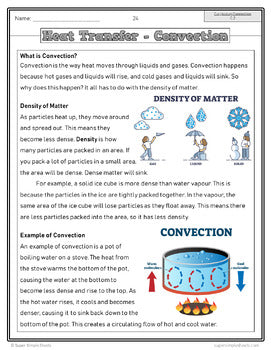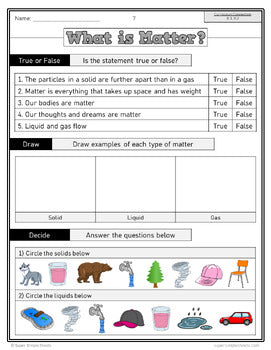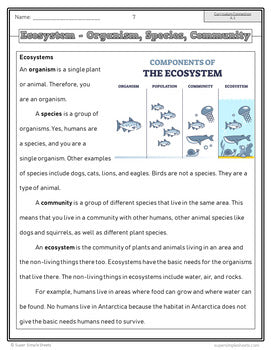BC Grade 3 Science Full Year Bundle
BC Grade 3 Science Full Year Bundle
Interested in a bundle? Shop below instead!
Couldn't load pickup availability
PRODUCT PREVIEW
PDF AND GOOGLE SLIDE VERSIONS BOTH INCLUDED! UPDATED IN 2023!
BC Science Curriculum - Grade 3. This product was created to cover all of the expectations in the BC Science Grade 3 curriculum.
There are 480+ activity sheets that cover the learning standards in the science curriculum. This massive unit contains readings, research assignments, diagrams, true/false, and much more!
We have added STEM activities as well as hands on experiments for students to learn the content in the curriculum.
Check out the previews of these units to learn more about how it can benefit your students. We know you will love this no-prep, just print or upload to Google, time-saving resource!
Students will practice literacy skills when demonstrating their understanding of the subject material. These sheets were made for cross-curricular connections between language and science. Students will make connections, infer, support their answers with evidence from the text, and summarize. Each worksheet contains a reading followed by questions for them to demonstrate their learning. Students will enjoy the matching, true or false, and multiple choice questions.
Topic 1 : Biodiversity
Some of the concepts that are covered:
- Ecosystems – living and non-living things
- Ecosystems – organisms, species, and community
- Activity – differences between organisms, species, community, and ecosystem
- Survival needs of animals
- Experiment – designing a zoo enclosure that meets the needs of animals
- STEM assignment – paying for a zoo enclosure (math connection)
- Vertebrates – mammals, reptiles, amphibians, fish, and birds
- Activity – making a vertebrate animal
- Food needs of vertebrate animals
- Invertebrate animals – insects, spiders, and worms
- Activity – vertebrate or invertebrate animal
- Food chain – 4 link food chains, 5 link food chains, and 6 link food chains
- Altering the food chain – example in Borneo
- Herbivores, carnivores, and omnivores
- Classifying organisms
- Experiment – animal’s scat
- Plants – sorting common plants (shrubs, trees, creepers, climbers, and herbs)
- Basic needs of plants
- Seed plants – life cycle
- Experiment – testing the basic needs of plants
- Bulb plants – life cycle
- Classifying plants – flowering plants and non-flowering plants
- Plants need animals – spreading pollen, seeds, and manure
- Animals need plants – food, shelter, oxygen
- What is biodiversity?
- Where is there the most biodiversity – along the equator
- Biodiversity – comparing Canada and the Amazon Rainforest
- Biodiversity between species – different bears
- Benefitting from biodiversity – everyday products (food, cleaning products, and medicine)
- Biodiversity and First Peoples
- First Peoples use of plants – shelter, food, and clothing
- First Peoples – Interconnectedness and stewardship of the environment
- Biodiversity in ecosystems near you
- Experiment - Building biodiversity – making a bird feeder
- Sustainable practices – making a poster
- Unit Test
- Answer pages for all activities
Topic 2: Understanding Matter
Some of the concepts that are covered:
- What is matter?
- All about liquids
- How we use liquids at home
- Flowing liquids
- Experiment – testing the flow of different liquids
- Natural vs human made solids
- Activity – natural or human made solids
- Characteristics of solids
- Flow of solids versus liquids
- Is the matter a solid or a liquid?
- Combining solids and liquids
- Experiment – testing the dissolving process
- Experiment – making a solid (gelatin)
- Mixtures of solids and liquids
- Sink or float – will solids float in liquids?
- Density of solids and liquids
- Experiment – buoyancy of water
- Scuba divers – solids floating in liquids
- Experiment – buoyancy of different liquids
- Experiment – making a boat that floats and supports a load
- Solids that absorb or repel liquids
- Experiment – do the materials absorb or repel liquids
- All about gases – properties of gases
- Experiment – does air have weight?
- Air – made of gases (oxygen and nitrogen)
- Experiment – is air everywhere?
- Air pressure
- Experiment – testing the force of air pressure
- Matter and energy
- Wind power
- Activity – making a pinwheel (matter) that moves by energy (wind)
- Activities – word searches and word scrambles
- Unit test
- Answer pages for all activities
Topic 3: Thermal Energy
Some of the concepts that are covered:
- Particles in matter
- What is thermal energy?
- Thermal energy – heat transfer
- Experiment – Thermal energy experiment
- Transfer of thermal energy
- Conduction – reading and questions
- Experiment – conduction in action
- Thermal conductivity – materials that conduct heat
- Experiment – Insulating materials
- Convection – reading and questions
- Convection currents – Hot air balloon
- Experiment – Convection in action
- Convection – Sea breeze versus land breeze
- Radiation heat transfer
- Activities – is the heat transfer conduction, convection, or radiation
- Sources of thermal energy
- Friction – source of thermal energy
- Experiment – what is friction
- Experiment – rubbing your hands together and measuring the heat made
- Thermal energy from the Sun
- Thermal energy from chemical reactions
- Thermal expansion in gases – deflated basketball and aerosol cans
- Experiment – testing thermal expansion in gases
- Thermal expansion in liquids – thermometers and sea levels rising
- Thermal expansion in solids – railway tracks built with gaps, broken glass, sticky door
- Examples of thermal expansion and contraction
- Activities – word search and word scramble
- Unit test
- Answer pages for all activities
Topic 4: Landforms
Some of the concepts that are covered:
- What are landforms?
- What are the layers of Earth?
- The Earth’s plates – jigsaw puzzle
- Mountains and how they are formed
- Plate boundaries
- Experiment – modelling the plate boundaries
- The Rocky Mountains
- How the First Peoples use the Rocky Mountains
- Landform – Hills
- Landform – Plateaus
- Landform – Valleys
- Experiment – Modelling the formation of a valley
- Landform – Riverbed
- Rivers in British Columbia
- First Peoples and the Fraser River
- Landform – Deltas
- Landform – Volcanoes
- Experiment – Making a model volcano
- Landform – Glaciers
- Glacial Erosion
- First Peoples knowledge of landforms
- Landform activities – sorting landforms
- Weathering of rocks
- Erosion – water, wind, and ice
- Deposition – the formation of new landforms
- Soil erosion – reading and questions
- Experiment – Modelling soil erosion
- Coastal erosion – sea stacks, stumps, caves
- Controlling coastal erosion – seawalls, breakwaters, and natural barriers
- Meandering streams – form because of erosion and deposition
- Activities – word search and word scramble
- Unit test
- Answer pages for all activities
This is a comprehensive bundle that will save you hours of planning! It has been tested and found effective in helping students learn the big ideas in the curriculum.
Share





Great resource!








